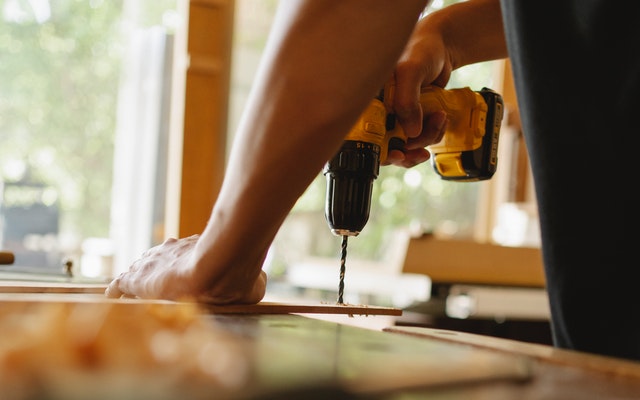The author is making a number of great pointers on the subject of Who is responsible for plumbing maintenance in general in this article just below.

Handling plumbing problems in rental residential properties effectively is important for preserving tenant satisfaction and maintaining the building's worth. Whether you're a property owner or a residential or commercial property manager, recognizing exactly how to deal with these usual troubles can save you money and time while making sure compliance with lawful obligations. Below's a detailed guide on just how to manage plumbing concerns in rental homes.
Establish Clear Interaction
Encourage lessees to report any type of plumbing problems as soon as they take place. Offer several communication channels such as phone, e-mail, or an occupant portal to make it simple for them to reach out. Trigger responses to these records can avoid small issues from escalating right into major issues.
Educate Occupants
Educate your occupants about what makes up a plumbing emergency situation and what does not. Offer standards on how to take care of minor problems themselves, such as making use of a plunger to unblock a toilet. Likewise, educate them about what they must avoid putting down drains pipes to prevent blockages, such as grease, coffee premises, and non-biodegradable items.
Routine Upkeep
Implement a routine upkeep timetable for all plumbing systems in your leasing buildings. Regular checks can assist recognize and resolve problems like leakages, slow-moving drains, or corroded pipelines before they end up being significant. Consider employing an expert plumbing professional to inspect the homes each year or semi-annually.
Quick Response to Emergencies
Have a plan in place for reacting to pipes emergency situations. This need to consist of having the contact information of reliable plumbing services that provide 24/7 emergency repair services. Quick activity is vital to decrease damages in scenarios like ruptured pipelines or extreme leakages.
Document Everything
Keep detailed records of all reported plumbing issues and the activities taken to resolve them. Documentation should include dates, summaries of the trouble, interaction with lessees, and invoices from service providers or plumbing professionals. This details can be critical for insurance policy cases, tax obligation deductions, and legal protection.
Usage Qualified Professionals
Always utilize certified and insured professionals for significant pipes fixings and installments. This makes sure that the work is up to code and can help stay clear of responsibility problems in case of accidents or further damages. It likewise assures renters that fixings are being managed skillfully.
Understand Legal Duties
Recognize your legal responsibilities pertaining to pipes and general property upkeep. A lot of jurisdictions call for property managers to ensure their properties are habitable which all plumbing systems remain in good working order. Failing to address significant problems promptly can bring about legal actions from tenants.
Occupant Reimbursements
If a pipes problem calls for instant attention and the occupant deals with the concern on their own, have a clear plan in place for compensating expenses. Make sure tenants recognize they ought to get prior authorization for higher-cost repairs unless it's an outright emergency.
Preventive Upgrades
Think about updating older plumbing systems and components to more contemporary, efficient designs. This can lower the frequency and intensity of plumbing problems and lower long-term maintenance costs. It's additionally a marketing point for potential tenants that value upgrades and contemporary features.
Tenant Move-Out Inspections
Conduct detailed pipes checks during move-out inspections to make certain that any type of issues are recognized and resolved before a new lessee relocate. This prevents disagreements with new renters over pre-existing conditions and ensures the building remains in top problem.
Conclusion
Taking care of plumbing issues in rental buildings needs an aggressive approach and excellent communication with lessees. By staying on top of upkeep, responding without delay to emergencies, and making use of competent specialists, property owners can maintain their properties in exceptional condition and preserve excellent relationships with lessees.
How to Handle Water Damage in a Rental Property
What is Water Damage?
Water damage is harm or destruction caused by water entering areas where it is not supposed to be. It can be caused by a variety of sources and can manifest in different ways. The most common examples of water damage include:
- Leaking roof
- Plumbing leaks
- Appliance malfunctions
- Poor drainage
- Flooding
- Sewage backup
- Condensation
- Tenant negligence
- HVAC system issues
- Frozen pipes
Is water damage dangerous?
Water damage itself is not inherently dangerous, but it can lead to various hazards and health risks if not promptly and properly addressed. The severity of these risks depends on the extent of the water damage, the source of the water, and how quickly it is mitigated.
Some potential dangers associated with water damage include structural damage, mold and bacterial growth, electrical hazards, water contamination, and pest infestations. In situations where mold and mildew have gone unaddressed, mold can start to develop within 24-48 hours of water exposure, and this can impose a serious health risk to tenants. In particular, mold spores and damp conditions can lead to respiratory issues and even make existing health problems worse, such as allergies, asthma, or immune disorders.
Water Damage in an Apartment - Who is Responsible?
- If the water damage is caused by the tenant’s negligence, the tenant is responsible for the cost of repairs.
- If the water damage is caused by a defect in the property, the landlord is responsible for the cost of repairs.
- If the water damage is a result of natural causes, such as excessive rain, then the landlord is responsible, since the water intrusion likely occurred due to a defect in the property.
Landlord Responsibility water damage in rental property
Since maintaining habitability is the landlord’s legal responsibility, landlords are responsible for any resulting structural damage caused by water damage. These structural damages may include damage to walls, roofs, ceilings, and flooring. If water damage has affected the rental property’s original structure, the landlord is responsible for repairing or replacing those materials. Therefore, landlords should have property insurance that covers the structural components of their rental property so that they can receive help with the costs of covered events.
Preventative measures can also help landlords avoid massive renovations. Preventative maintenance may include conducting regular inspections to identify and address potential water damage before it becomes a major and urgent problem.
If a landlord fails to meet their responsibilities regarding water damage, it can lead to legal disputes and potential liability. Tenants who believe their landlord is not addressing water damage issues in accordance with California law can seek legal advice or contact local housing authorities for assistance.
https://www.goodlifemgmt.com/blog/water-damage-in-a-rental-property/

I am very taken with How to Handle Plumbing Issues in Your Rental Property and I am hoping you liked the new blog entry. Do you know about another individual who is very much interested in the niche? Be sure promote it. Thanks a lot for taking the time to read it.
Comments on “Landlord's Guide to Plumbing Maintenance in Rental Homes”